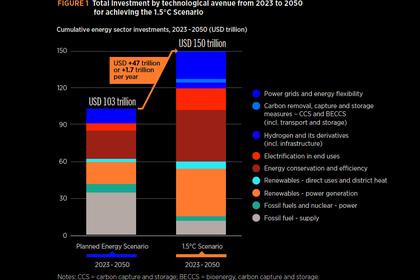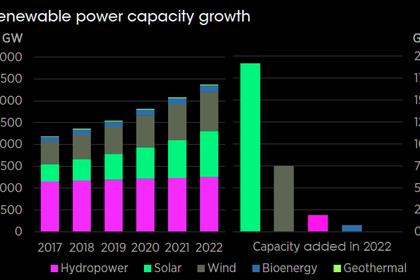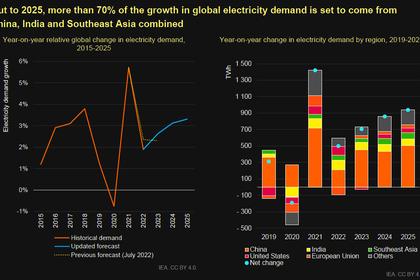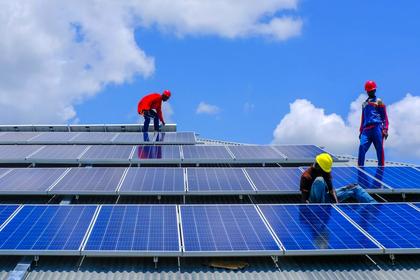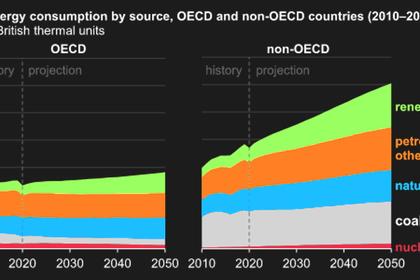
GLOBAL HYDROGEN REVOLUTION

By PAUL MCCORMACK Innovation Manager, Belfast Met
ENERGYCENTRAL - Mar 28, 2023 - As Green Hydrogen gains more and more of a technical, commercial and environmental foothold in the modern net zero European energy equation; the question is do we need an energy evolution, a revolution or a mixture of both?
The answer all depends on your starting point and that of your sector. Hydrogen for many is not a competitor, not an energy invader and not part of an energy revolution. Many see GreenH2 as a solution that is incrementally replacing fossil fuels across many sectors and an energy vector for reducing our C02 footprint. As such it is technically evolving as solutions, applications and uses are coming mainstream.
However, hydrogen for some and in some areas will revolutionse the energy system. Significant climate change targets are to be met under the Paris Agreement. In 2016, globally we had 49.4 billion tonnes of CO₂ equivalents (CO₂e) with almost three-quarters of global GHG emissions come from our energy consumption. The transport sector globally accounts for 16.2% of all greenhouse gas emissions with road transport accounting for 11.9%. Addressing these GHG challenges will be somewhat of a mini revolution.
Green Hydrogen is a key energy vector that can assist Europe reach climate change targets as it enables massive decarbonization of industry heat, power generation and transport sectors. Global demand for hydrogen is forecast to reach 50 million tons by 2025 and there is a potential that 50-60% of this will be GreenH2.
Many large industrial companies are setting out their ambitions to be net zero by 2050. These companies have developed new energy strategies in order to reach this ambition. These strategies entail how they will reshape their business models and ‘pivot’ to be greener companies delivering integrated energy based on renewable sources and move away from fossil fuel dependence and C02 emissions. At the heart of these strategies there are many energy options but one energy vector is common across a lot of them – Green Hydrogen, hydrogen produced from renewables.
Hydrogen is not a new energy, its first use was recorded back in the 16th century. However, hydrogens potential as a low carbon source of energy has been gathering momentum over the last number of years. The need to tackle climate change, reduce our C02 footprint in transport, industry and heat combined with our need to wean ourselves from fossil fuels have all combined to highlight the commercial, environmental and social opportunities for the versatility Hydrogen as an energy vector.
All of these initiatives see Hydrogen continually evolve as part of the replacement for fossil fuels. As the EU embarks on the economic recovery journey from COCID-19 there is a clear opportunity to set the trajectory towards a truly green recovery. Clean, green hydrogen from renewables – Hydrogenewables will play a pivotal role in realising the EU’s climate objectives. As the consensus grows highlighting the road to economic recovery must be green with the fight against climate change at the core. The European Green Deal and the National Energy and Climate Plans across the EU already provide a clear pathway allowing Hydrogen and other green energy solutions to evolve. The EU deal has laid out a road map to transform the European economy based on an evolution of green technologies including hydrogen. The €1 billion European Green Deal call will help fast track the commercialisation of Hydrogenewables in the energy solutions for Europe and is a window of opportunity for energy innovation, participation and hydrogen evolution.
Green Hydrogen is a key energy vector that can assist Europe reach climate change targets as it enables massive decarbonization of industry heat, power generation and transport sectors. Identifying, informing and utilising all of the strands of this energy vector for decarbonising Europe’s energy system is vital HAZEL - ‘Green Hydrogen enAbled Zero Emissions suppLy chain is a series of projects and webinars addressing the entire supply chain of Green H2 including production, sustainability, safety, application, innovation and entrepreneurship. HAZEL and other GreenH2 projects are pathfinders on oue European net zero journey, assisting Europe to navigate its journey to sustainability using Green Hydrogen as the true north on the Net Zero Strategy Compass.
As the opportunities for greater use of hydrogen in the energy equation evolve we now are now pushing the boundaries where we can utilise Smart Hydrogen or SMARTH2 to provide low carbon solutions. We are currently seeing hydrogen been used in transport (P2T), Power to Industry (P2I), Power to Mobility (P2M), Power to Heat (P2H) and Power to Gas grid injection (P2G). However as we seek to validate new opportunities (P2X), optimise SMARTH2 commercially (P2€) and develop additional valorisation pathways (P2V) and map out new commercial and technical navigation routes for the transition of the EU energy system to the green destination (P2?) we are witnessing the real evolution of SMARTH2 as a sustainable energy future in a Green Europe.
Hydrogen is the catalyst driving Europe’s energy transition. Optimising this journey through valorization of the hydrogen supply chain, production, storage and use is key to creating a successful hydrogen Europe.
As we seek to integrate Hydrogen into the energy equation we need to optimise hydrogen production, storage and use. One such optimisation journey is currently being developed through a Hydrogen Optimisation Support Tool (HOST), to actualise Community Hydrogen Forums (CH2F) and to valorise and maximise the green energy outputs. This techno economic tool will also allow user to validate P2X H2 technologies can be deployed in individual scenarios and to develop longterm strategies for the advancement in adoption of hydrogen technologies.
This tool will also enable the mapping of Energy Navigation Routes for the transition of the EU energy system from fossil fuel dependence to green destination.
Europe has set out the targets to reach the emissions reduction objectives set by the Paris Agreement and is the driving force in this new energy transition as we move to new greener energy solutions. Hydrogen as an energy carrier is one of these new solutions in this transition, it is an enabler for the decarbonization of transport, industry, heating, and storage of energy from intermittent renewable energy sources.
However whilst we are all looking to hydrogen as a solution we must overcome the commercial challenges in tandem with the climate challenges. For any solution to succeed in driving this energy transition it must be profitable, empowering commercial investment and therefore ensure successful technological and financial integration into the energy system.
To achieve a rapid and sustained economic reactivation it is key that the sectors with the greatest potential to act as drivers of recovery are identified, prioritised and actioned upon.
Europe has set goals of cutting cut greenhouse gas emissions by 80-95% which would mean decarbonising European transport emissions by 60% by 2050. Hydrogen technologies demonstrate that they are an integral part in the great energy transformation of the 21st century and have great potential to be an important cornerstone of the future energy system.
Just as Green H2 is an evolving technological, financial and social solution in Europe’s energy transition, it must be matched by an evolution of the regulatory environment in European member states. It is crucial to sustain the embryonic niche Hydrogen markets by EU and national government supports and amplify the energy evolution steps so we can reach a ‘tipping point’ where the versatility of hydrogen as an energy vector becomes mainstream.
In conclusion, it needs to be a revolution. To ensure we tackle climate change now and reduce our C02 footprint there has to be a fundamental and quick change. Hydrogen as an energy vector can be used as a buffer between energy demand and supply and importantly enable flexibility between the potential energetic and non-energetic uses of renewable energy.
Smart Hydrogen is a concept that combines (1) a solution to the electrical grid network challenges faced by renewable electricity, (2) opportunities in hydrogen supply pathways, (3) prospects for new hydrogen applications, and (4) innovation in energy and chemicals markets with “Power to X technologies”.
Increasing use of intermittent renewable energy have reduced CO2 emissions and increased energy security of supply. Hydrogen as an energy carrier enables increased use of renewable energy making it economic sustainable. Hydrogen is a highly versatile energy carrier that can be used to meet demand in the heating/cooling, transport and power sectors. The fact that it can be produced efficiently, cleanly and safely using only electricity and water makes hydrogen ideally suited to address the challenges of intermittency, overcapacity, curtailment, and the need to store energy seasonally.
Hydrogen can be used efficiently and with no CO2 emissions in fuel cell powered vehicles. As an automotive energy carrier, hydrogen is not expected to compete with the ongoing electrification of light-duty passenger cars and vans. Fuel cell electric vehicles (FCEVs) will instead compliment electric vehicles (EVs) by decarbonising larger cars, trucks and buses that require energy densities and ranges that EVs cannot provide.
-----
This thought leadership article was originally shared with Energy Central's Energy Collective Group. The communities are a place where professionals in the power industry can share, learn and connect in a collaborative environment. Join the Energy Collective Group today and learn from others who work in the industry.
-----
Earlier:
